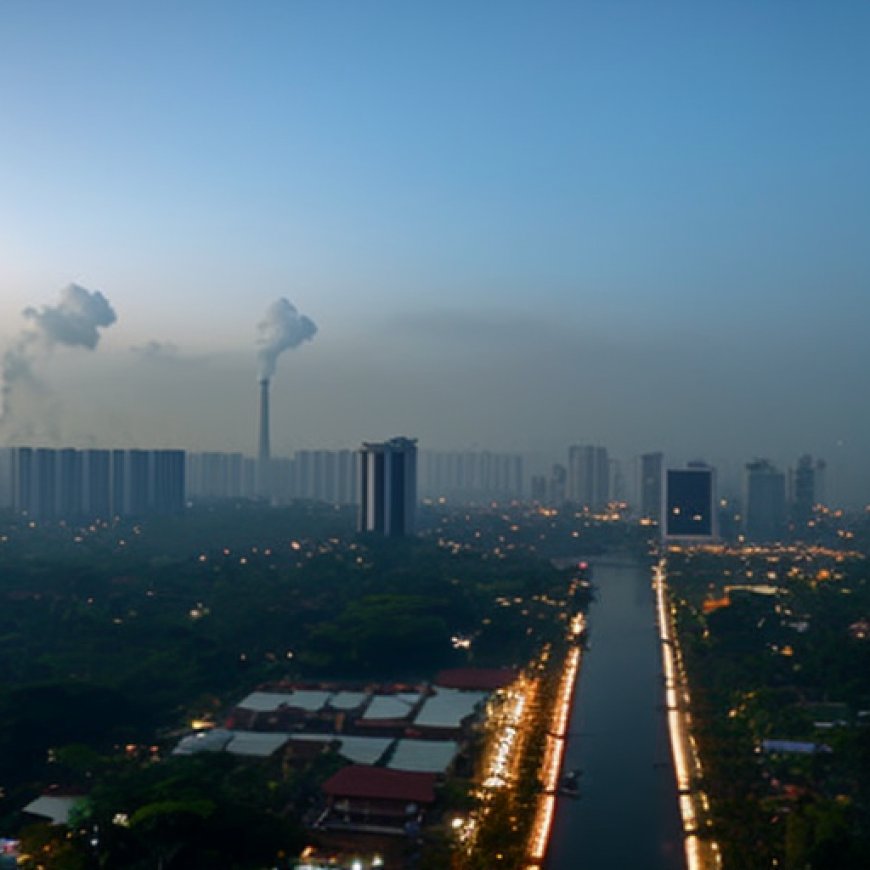Jakarta is the world’s most polluted city. And Indonesia’s leader may have the cough to prove it | CNN
Jakarta is the world’s most polluted city. And Indonesia’s leader may have the cough to prove it CNN


From bad to worst
Introduction
Indonesia’s capital Jakarta is the world’s most polluted city, according to a new study, and the country’s president may have the cough to prove it.
Ministers in the Southeast Asian country confirmed this week that President Joko Widodo had been battling a cough for weeks and suggested it could be related to worsening air pollution in the city of 10 million.
The news came just days after the Swiss company IQAir released data showing that Jakarta’s air quality had deteriorated in recent weeks to become the worst in the world.
“President Joko Widodo has asked that there be concrete steps (to tackle air pollution) within one week. He has been coughing for almost four weeks and said he has never felt this way,” Indonesia’s Minister of Tourism and Creative Economy Sandiaga Uno told reporters after a parliamentary meeting between ministers in Jakarta on Monday.
Uno said doctors were still diagnosing the cause of Widodo’s cough but added that it might be related to the worsening air quality, reported CNN affiliate CNN Indonesia.
The following day Health Minister Budi Gunadi Sadikin also noted the president was battling a cough and said his ministry was stepping up tests in the general population to see if there had been an increase in lung and respiratory diseases like asthma in highly polluted areas.
“We are monitoring the situation,” Budi told reporters.
“All reports about the impact of air pollution on public health will be coordinated to the related ministries and official agencies for evaluation,” he added.
Air Pollution in Jakarta
Air pollution has long plagued the Greater Jakarta area, with factories, coal-fired power plants and traffic congestion all contributing to the smog, according to experts.
In 2019, a group of 32 residents launched a civil lawsuit against Widodo – widely known as Jokowi – and several members of his cabinet, alleging he had failed to take action to control air pollution and uphold their right to clean air.
They won a historic victory two years later when the Central Jakarta District Court ruled in their favor. It said the government had violated the country’s environmental protection laws and called on top officials to establish a national ambient air quality standard along with other measures.
But in
SDGs, Targets, and Indicators
-
SDG 3: Good Health and Well-being
- Target 3.9: By 2030, substantially reduce the number of deaths and illnesses from hazardous chemicals and air, water, and soil pollution and contamination.
- Indicator: Number of deaths and illnesses attributed to air pollution.
-
SDG 11: Sustainable Cities and Communities
- Target 11.6: By 2030, reduce the adverse per capita environmental impact of cities, including by paying special attention to air quality and municipal and other waste management.
- Indicator: Proportion of urban population living in areas where air quality meets WHO guidelines.
Analysis
The article highlights the issue of air pollution in Jakarta, Indonesia, and its impact on public health. Based on the content of the article, the following analysis can be made:
1. Which SDGs are addressed or connected to the issues highlighted in the article?
The issues highlighted in the article are connected to the following SDGs:
- SDG 3: Good Health and Well-being
- SDG 11: Sustainable Cities and Communities
2. What specific targets under those SDGs can be identified based on the article’s content?
Based on the article’s content, the following specific targets can be identified:
- Target 3.9: By 2030, substantially reduce the number of deaths and illnesses from hazardous chemicals and air, water, and soil pollution and contamination.
- Target 11.6: By 2030, reduce the adverse per capita environmental impact of cities, including by paying special attention to air quality and municipal and other waste management.
3. Are there any indicators mentioned or implied in the article that can be used to measure progress towards the identified targets?
Yes, there are indicators mentioned or implied in the article that can be used to measure progress towards the identified targets:
- Number of deaths and illnesses attributed to air pollution: This indicator can be used to measure progress towards Target 3.9 under SDG 3.
- Proportion of urban population living in areas where air quality meets WHO guidelines: This indicator can be used to measure progress towards Target 11.6 under SDG 11.
Table: SDGs, Targets, and Indicators
| SDGs | Targets | Indicators |
|---|---|---|
| SDG 3: Good Health and Well-being | Target 3.9: By 2030, substantially reduce the number of deaths and illnesses from hazardous chemicals and air, water, and soil pollution and contamination. | Number of deaths and illnesses attributed to air pollution. |
| SDG 11: Sustainable Cities and Communities | Target 11.6: By 2030, reduce the adverse per capita environmental impact of cities, including by paying special attention to air quality and municipal and other waste management. | Proportion of urban population living in areas where air quality meets WHO guidelines. |
Behold! This splendid article springs forth from the wellspring of knowledge, shaped by a wondrous proprietary AI technology that delved into a vast ocean of data, illuminating the path towards the Sustainable Development Goals. Remember that all rights are reserved by SDG Investors LLC, empowering us to champion progress together.
Source: cnn.com

Join us, as fellow seekers of change, on a transformative journey at https://sdgtalks.ai/welcome, where you can become a member and actively contribute to shaping a brighter future.







